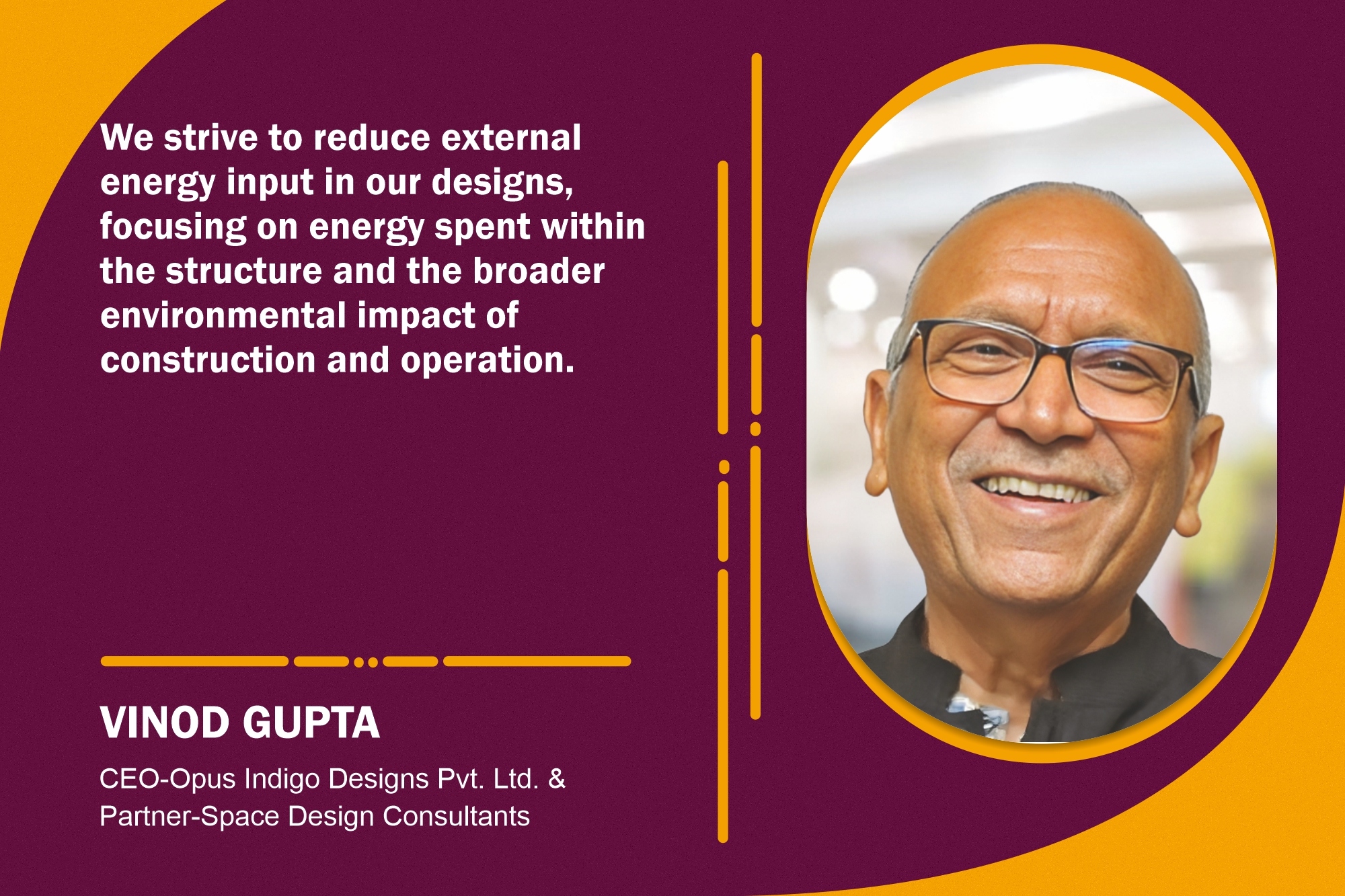Sustainable design strategies for energy-efficient buildings

This interaction maximises energy efficiency, enhances natural lighting and ventilation, and ensures minimal maintenance.
Why is it important to design buildings with adaptability and repurposing in mind?
Every project has criteria and constraints, requiring a unique review. However, one element stays constant: in a rapidly changing economy, structures outlast their usefulness, and it is critical to ensure that buildings can be repurposed when the owner decides to move on. We recently began developing malls, but many are no longer functional. Industrial, commercial, and residential structures are vulnerable to changes in use or function over time. In its 1500-year history, Hagia Sophia has been reused multiple times, from church to mosque to museum to mosque again, whereas Fatehpur Sikri has just been abandoned. We ensure that the buildings we create can be easily adapted.

What strategies do you implement to maximise energy efficiency in your building designs?
Aside from standard tactics such as envelope insulation, optimal glazing area, and efficient mechanical and electrical equipment, we also work with exterior sun shading, reduced air-conditioned areas, and daylighting in most areas. Wherever practical, we use low-energy alternatives to air conditioning, such as passive downdraft cooling, earth air tunnels, and evaporative cooling. In residential structures, we use classic features such as courtyards and cross ventilation to allow buildings to function without air conditioning whenever practical. The energy embodied in a building is determined by the materials and techniques utilised and the size of the area built. We work on the building programme to keep the built space to a functional minimum.
What strategies can be employed in building design to enhance daylighting and natural ventilation while striving to reduce overall external energy input?
In our projects, we employed light shelves, light shafts, skylights, and windows with transparent glass (not tinted glass) to provide daylighting. Designs incorporating permanent and movable exterior shade blinds reduce direct sunlight on glass areas and use daylight more. We also use courtyards, wind towers, specially constructed shafts for up-and-down ventilation, and openable windows to provide natural ventilation.
We designed the first ‘net zero energy’ building in Gurgaon, but we don’t say it’s energy self-sufficient. Buildings require external energy input for initial construction and normal operation after that. They consume embodied energy from materials, water, waste disposal, and transportation of people, commodities, and services. Residential buildings require energy embodied in food, clothing, and everything occupants consume. Net-zero energy buildings do not take into consideration any of these energy inputs. Instead of focusing on the energy spent within the structure, we strive to reduce the external energy input in our designs.
What are the benefits of sustainable architecture, and how do different approaches to maintenance impact the longevity and appearance of buildings?
The Taj Mahal and the ‘bhungas’ of Kutchh are two examples of sustainable architecture. The Taj Mahal is a monument made with long-lasting, specific materials that require little maintenance, whereas bhungas are built with readily accessible mud and thatch, which require regular maintenance. Both of these building types are environmentally friendly and long-lasting. We prefer the Bhunga model over the Taj. We established a project maintenance plan and made our services available when big adjustments were required. Some of our projects were developed in stages. The National Media Centre housing project in Gurgaon has been under continuous construction since its inception 25 years ago. Because of the upkeep approach, NMC looks better than when it was first erected.
For more details, visit:https://www.space-design.com/
Cookie Consent
We use cookies to personalize your experience. By continuing to visit this website you agree to our Terms & Conditions, Privacy Policy and Cookie Policy.










